Whether you’ve cooked with both of them or not, there are some significant differences between chives vs green onions. Often mistaken for one another and used interchangeably, chives and green onions are different ingredients all together, but what separates them from each other, and what makes them similar enough to use as substitutes for one another?
In this article, we will compare and contrast green onions and chives so that you can fully understand the differences between them. We will go over their physical descriptions as well as what they are typically used for, and what they taste like. If you want to know which option works better in your home kitchen, let’s get started and learn all about chives and green onions now!
Comparing Chives vs Green Onions
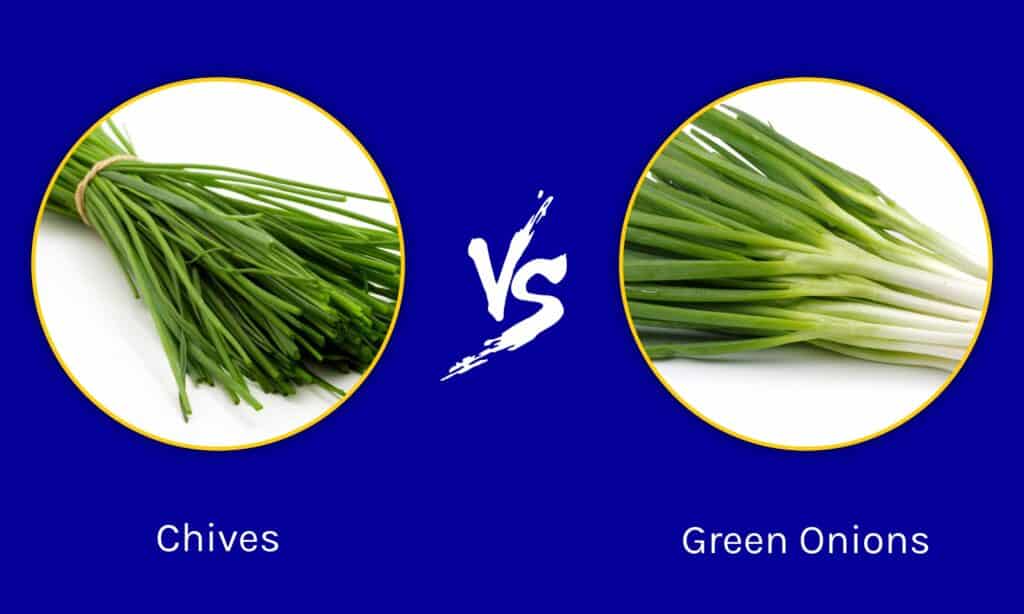
| Chives | Green Onions | |
|---|---|---|
| Classification | Allium schoenoprasum | Allium fistulosum |
| Description | Grasslike in appearance, composed of many small shoots or blades of herb from a single, slender bulb. Flowers are purple to white in color, with multiple petals. Shoots are hollow and grow up to 20 inches tall | Long shoots grow from single bulbs, reaching up to 3 feet tall. Grasslike shoots are hollow, ranging in thickness- some get woody with age. Flowers are large globes of typically white flowers, and the white bulbs or roots of green onions are edible |
| Uses | Many culinary uses, including in soups, baking, and dips. Delicate onion flavor makes it more palatable for a variety of dishes, as it will blend better than other options. Best eaten raw or as a garnish | Extremely popular in cuisines around the world, particularly in Japan and China. Eaten raw or sauteed, often in stir frys or other meals. Many varieties available that have different levels of flavor and textures |
| Hardiness Zones | 3-9 | 6-9 |
| Flavor and Texture | Delicate onion flavor that keeps well when frozen; turns mushy when cooked, so not ideal for stir frys or sautees. Texture is smooth and mild | Pure and strong onion flavor that holds up well under heat or eaten raw as a garnish. The older green onions you use, the more woody they will be in texture; younger options remain delicate |
Key Differences Between Chives vs Green Onions
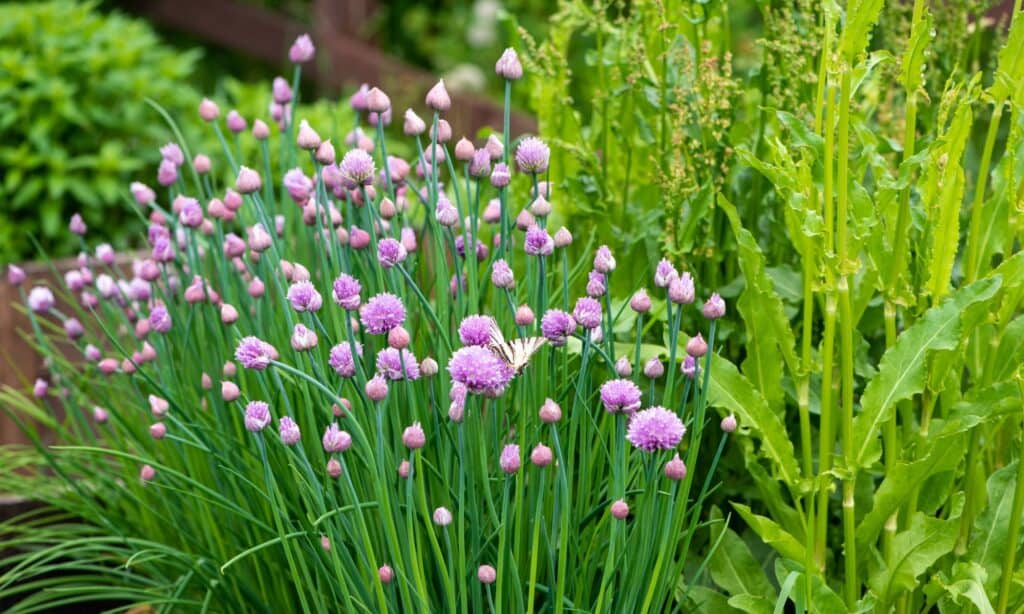
Chives are a much smaller crop compared to green onions.
©iStock.com/Svetlana Monyakova
There are many key differences between chives and green onions. While they both belong to the onion plant family, chives and green onions have different classifications from one another. In addition, chives are typically smaller and more slender compared to the average green onion plants. Finally, green onions have a stronger flavor compared to the delicate flavor of chives.
Let’s go over all of these differences in more detail now.
Chives vs Green Onions: Classification
In case you didn’t know already, both chives and green onions belong to the onion family, commonly known as Allium. However, they are distantly related to each other, despite their similarities and appearances. For example, chives are classified as Allium schoenoprasum, while green onions are classified as Allium fistulosum.
Chives vs Green Onions: Description
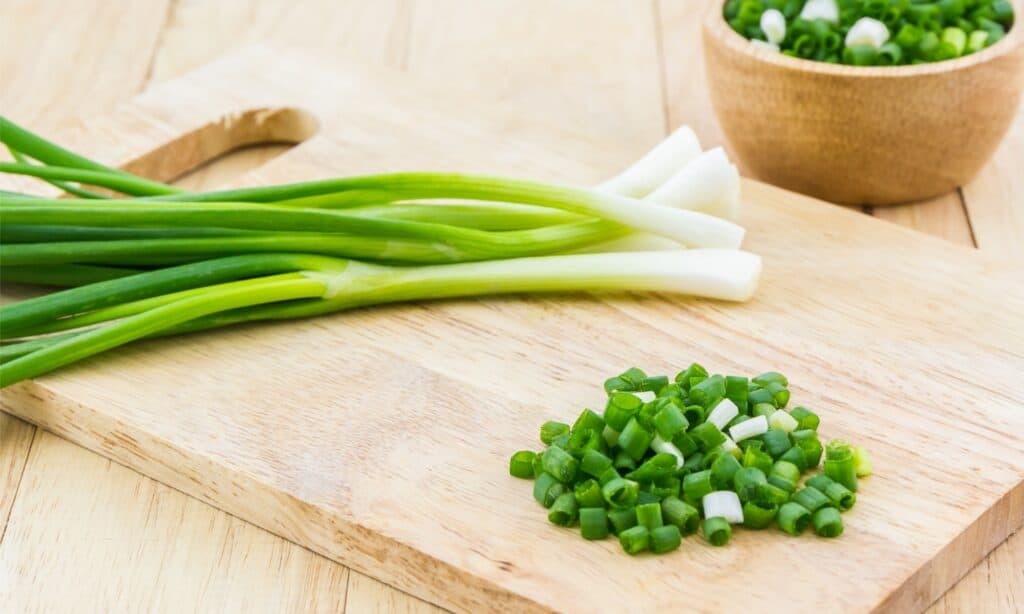
Chives turn mushy and have more difficulties when cooked or sauteed, while green onions are commonly used in this way.
©iStock.com/amnachphoto
It can be very difficult to tell the difference between chives and green onions, even if you were shopping for them in the grocery store. However, overall, chives are a much smaller crop compared to green onions. They grow shorter and thinner compared to green onions, which should give you some insight when shopping for them or growing them.
Besides their size differences, chives and green onions are strikingly similar. They both grow from a single bulb, and they both produce globe-like flowers when they are reseeding themselves in the fall. However, when found in your local grocery store, chives are often bound without their bulbs, looking like blades of grass, while green onions typically have their white bulbs and roots intact.
Chives vs Green Onions: Uses
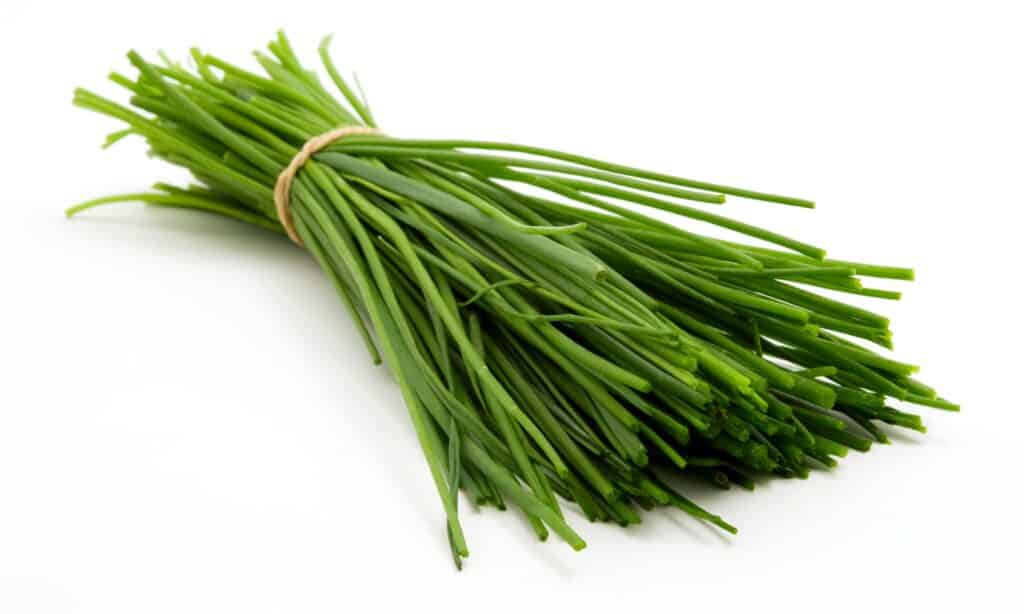
Chives grow best in zones 3 through 9, while green onions grow best in zone 6 through 9.
©iStock.com/only_fabrizio
Many people argue that you can use chives and green onions interchangeably in many recipes, as they are both popular around the world. However, green onions are used in a variety of Asian cuisines and hold up well to heat, while chives are less popular overall. In addition, chives turn mushy and have more difficulties when cooked or sauteed, while green onions are commonly used in this way.
Both of these herbs are delicious when used as a garnish or stirred into dips, but green onions have a much more potent flavor compared to chives. This is something to keep in mind if you plan on cooking with either option, as chives will give you more delicacy and balance in your recipes, while green onions tend to stand out more.
Chives vs Green Onions: Hardiness Zones
While they appear similarly and taste of onions, chives and green onions grow in different locations and have different hardiness zones that they prefer. For example, chives grow best in zones 3 through 9, while green onions grow best in zone 6 through 9. This means that green onions grow in fewer zones overall, though both chives and green onions won’t grow in the winter time.
Chives vs Green Onions: Flavor and Texture
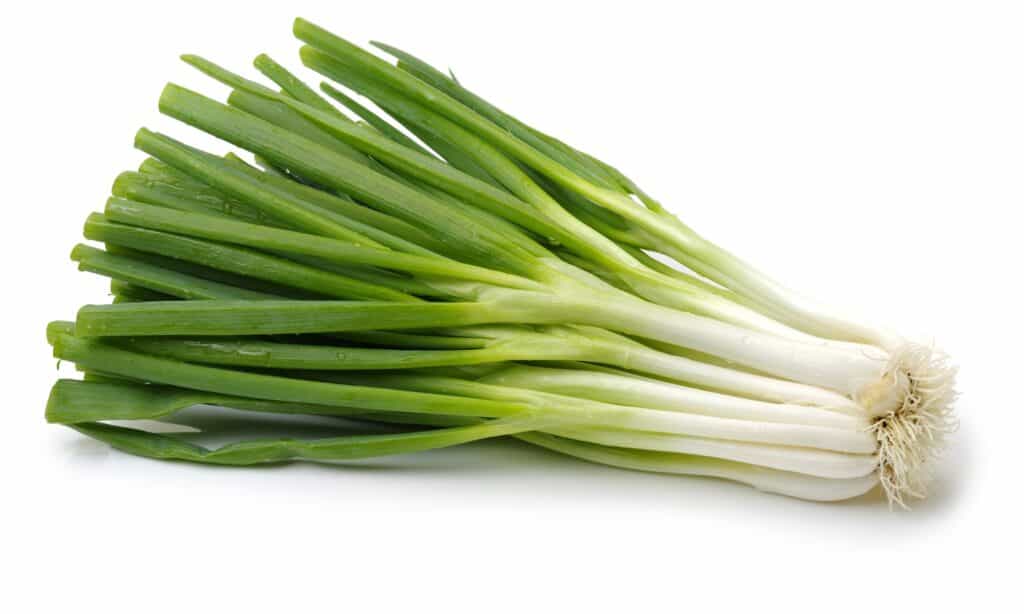
Green onions have a more potent onion flavor compared to chives.
©iStock.com/chengyuzheng
When it comes to the flavor and texture of chives and green onions, many people would say they are interchangeable and the same. However, an experienced chef can tell you that green onions have a more potent onion flavor compared to chives.
In addition, chives have a much more delicate texture given their smaller size, while green onions hold up well in a variety of culinary situations. However, make sure that you only purchase young and fresh green onions, as they get woody and tough as they age!
The photo featured at the top of this post is © iStock.com/Svetlana Monyakova
Thank you for reading! Have some feedback for us? Contact the AZ Animals editorial team.






